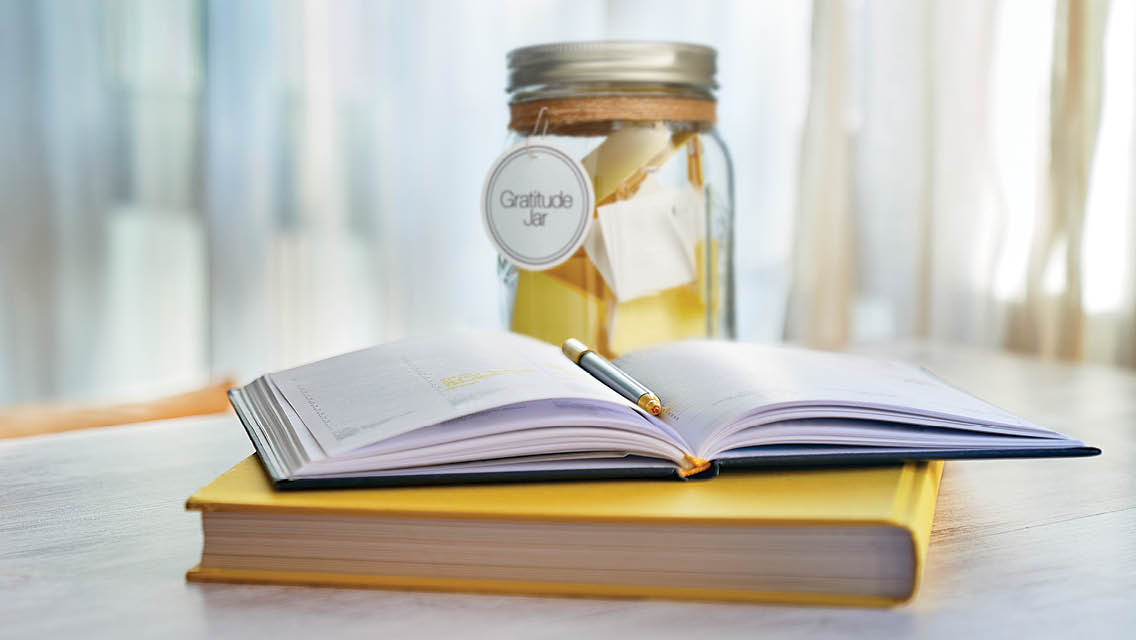Grateful people tend to have more optimism in general, which has been proven in many studies to boost the immune system and improve outcomes for people with compromised health.
Use a journal or portable notepad to write your appreciation on paper. Stick to a regular routine — morning, bedtime, or dinnertime with family or friends — that works for you.
Take Action
To cultivate optimism, joy, and serenity, try practicing the art of grateful living with these ideas.
-
- Focus on your blessings. Close your eyes and call to mind something to be grateful for, paying particular attention to your feelings, suggests Charles Shelton, associate professor of psychology at Regis University in Denver, in his book Achieving Moral Health: An Exercise Plan for Your Conscience. After a minute, open your eyes and ask yourself what you are feeling.
- Keep a written record. Psychologists Robert Emmons, PhD, and Michael McCullough, PhD, found that people who write about the things they’re grateful for feel healthier and more optimistic. Writer and teacher Diana Rico suggests writing a daily list of 10 things you are grateful for. Begin each sentence with the words “I am grateful for….” You’ll notice how uplifted you feel and how positive your outlook can become. Discover simple tips for keeping a gratitude journal here.
- Write a gratitude letter. “Select one important person from your past who has made a major positive difference in your life and to whom you have never fully expressed your thanks,” suggests Martin Seligman, PhD, in Authentic Happiness. Take your time — a few days or even a few weeks — to write a one-page testimonial about why this person is so important to you. Then get together with the person you appreciate and read the testimonial out loud.
- Designate a daily cue. Pick a daily activity — maybe picking up a fork to eat a meal or walking in the door of your home — that you can use as a cue to count your blessings, suggest Frederic and Mary Ann Brussat in Spirituality Rx. With practice, you will eventually experience an automatic flood of gratitude every time you engage in that activity.
- Express your appreciation. “To learn the grammar of gratitude,” write the Brussats, “practice saying ‘thank you’ for happy and challenging experiences, for people, animals, things, art, memories, dreams…. Utter blessings and express your appreciation to everything and everyone you encounter.”
More On Gratitude
6 Ways to Discover Real Gratitude
How to Build Romance Through Gratitude
How to Be More Grateful
A Gratitude Exercise for Positive Emotions
4 Ways to Express Gratitude
6 Tips to Writing a Meaningful Thank-You Note
One Healthy Habit
For more inspiration and other challenges, please visit One Healthy Habit.











This Post Has 0 Comments